Laser Acrylic Bookends by TechShop
by techshopzack in Living > Organizing
4821 Views, 27 Favorites, 0 Comments
Laser Acrylic Bookends by TechShop
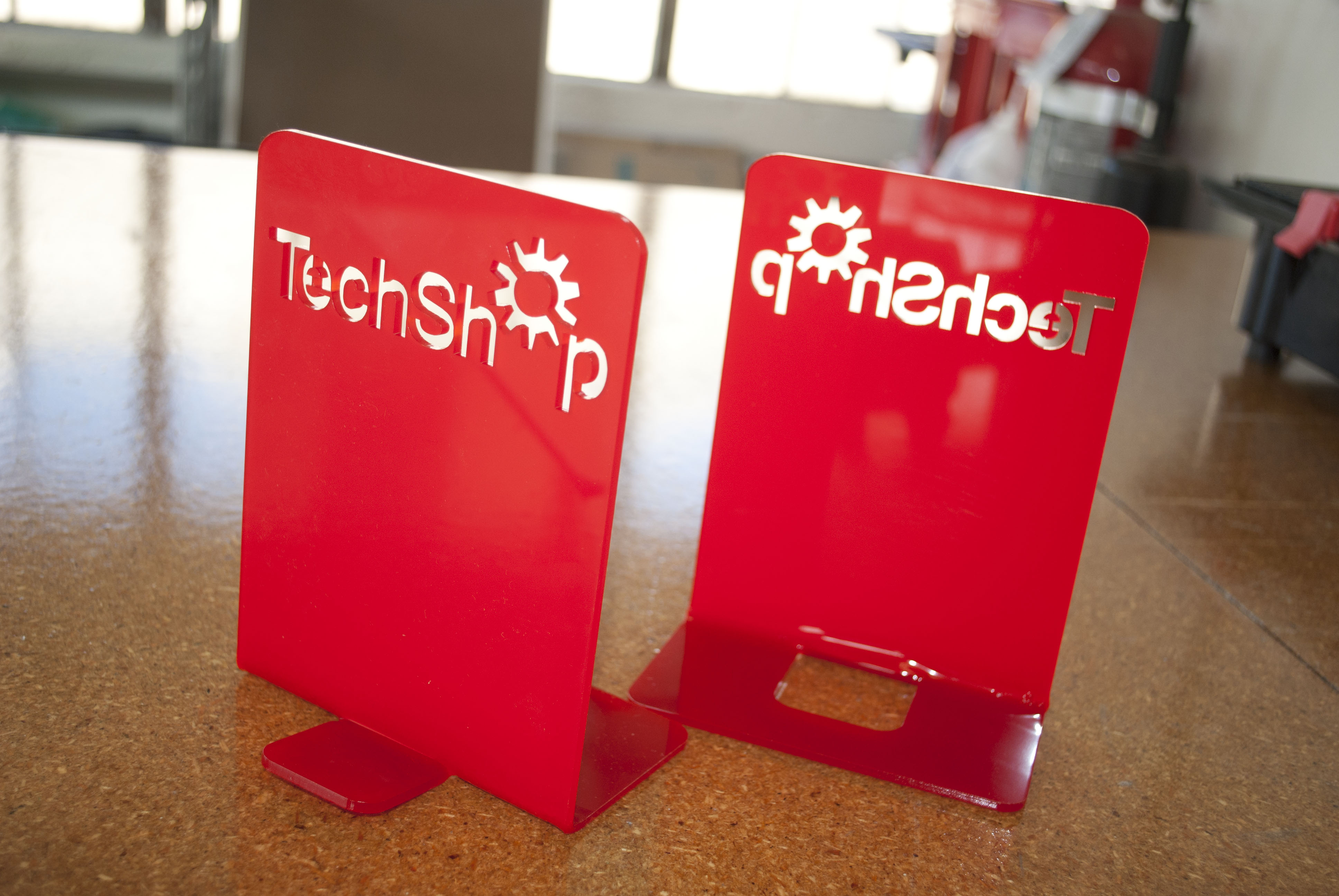
Lasered Acrylic Bookends by Zack@TechShop
www.techshop.ws
This instructable will guide you in creating easy bookends made from a sheet of acrylic. To do this, you need access to a laser engraving machine. This might be hard to find outside of TechShop but some universities and architectural firms have them. In order to do this you will need the following:
Tools:
1) Laser Engraver (all TechShop locations)
2) Heat Strip (some TechShop locations)
Associated TechShop Classes:
1) Laser Cutter SBU
Materials:
1) 18"x24"x1/8" Acrylic Sheet
www.techshop.ws
This instructable will guide you in creating easy bookends made from a sheet of acrylic. To do this, you need access to a laser engraving machine. This might be hard to find outside of TechShop but some universities and architectural firms have them. In order to do this you will need the following:
Tools:
1) Laser Engraver (all TechShop locations)
2) Heat Strip (some TechShop locations)
Associated TechShop Classes:
1) Laser Cutter SBU
Materials:
1) 18"x24"x1/8" Acrylic Sheet
Step 1: Preparing and Cutting
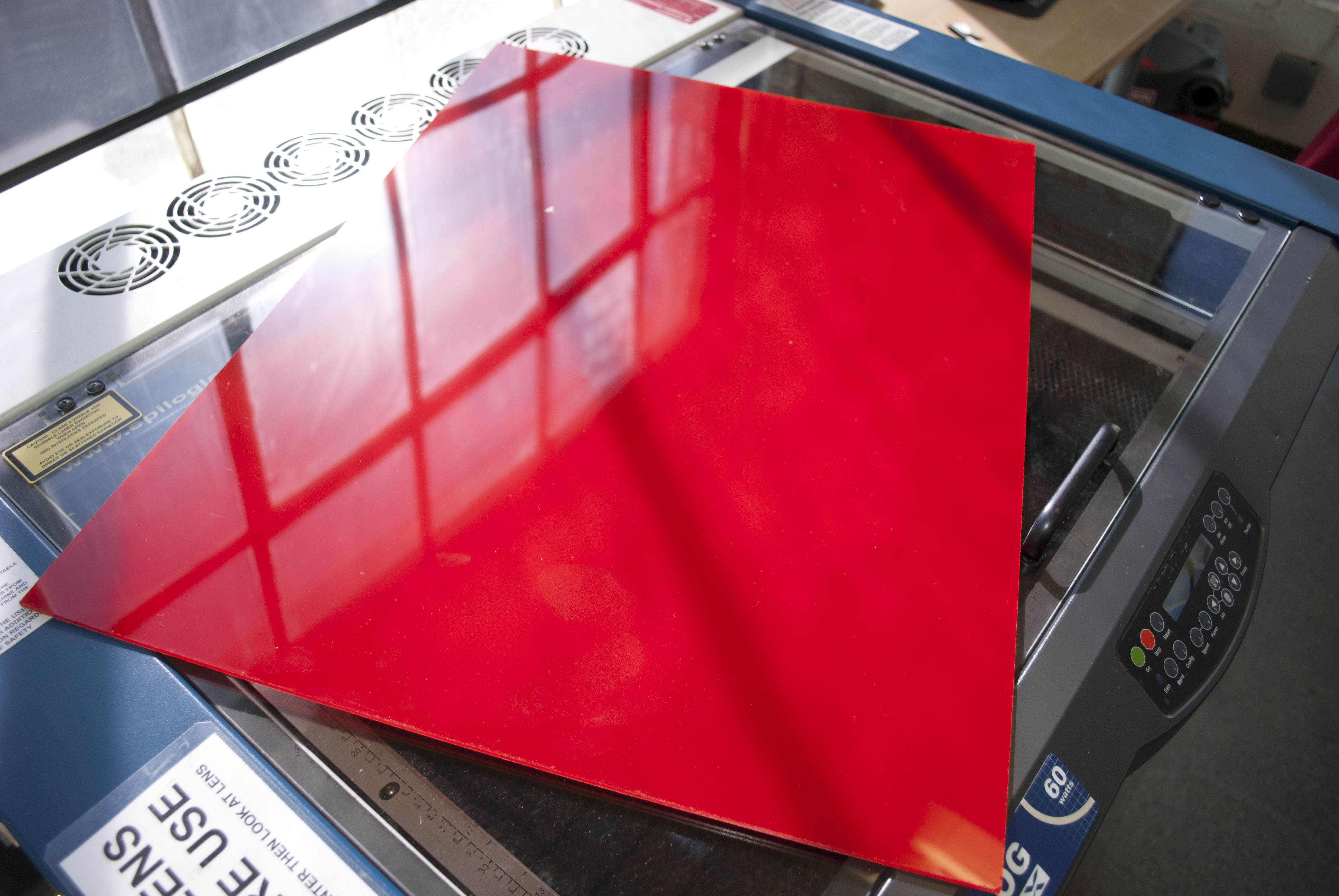
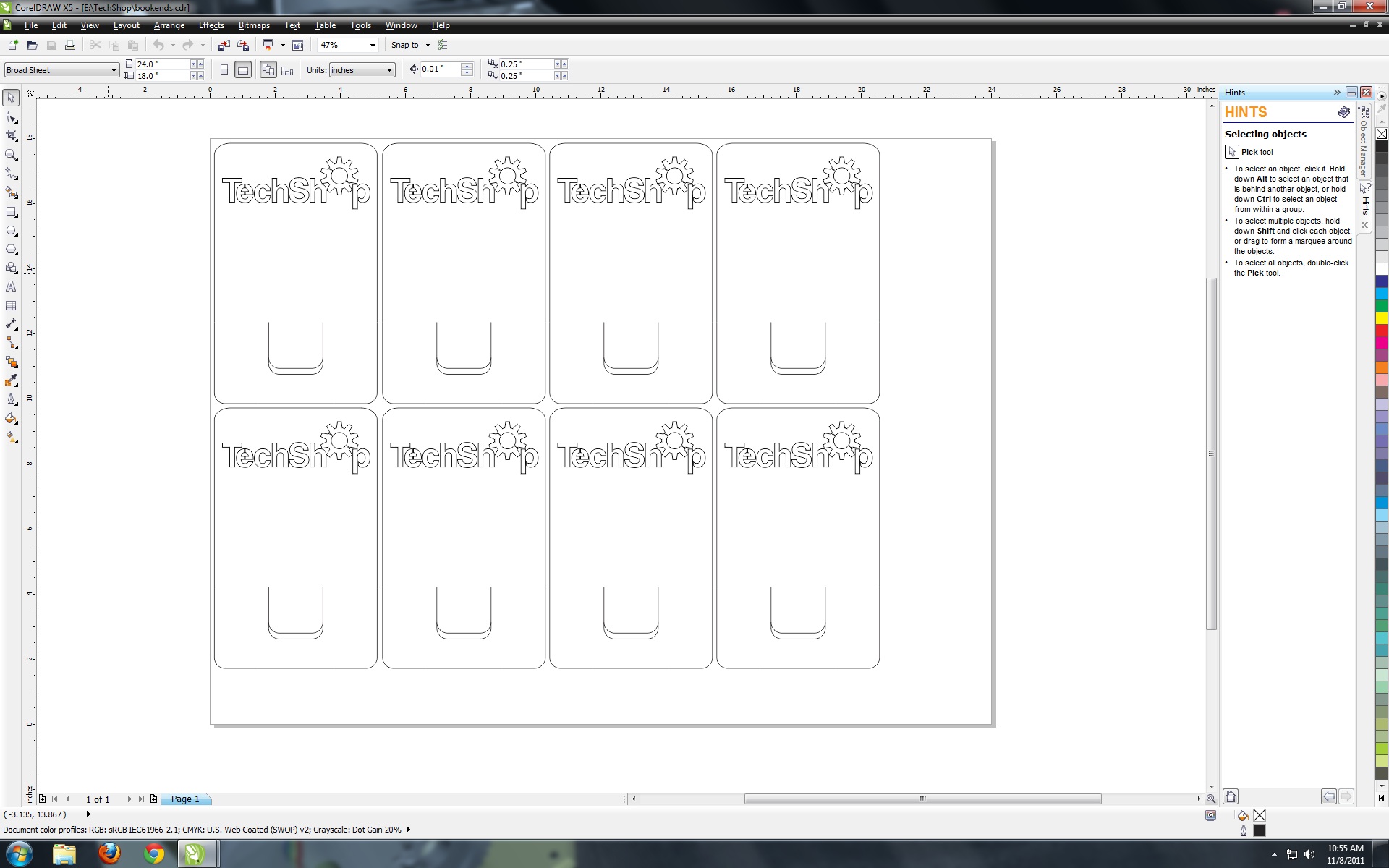
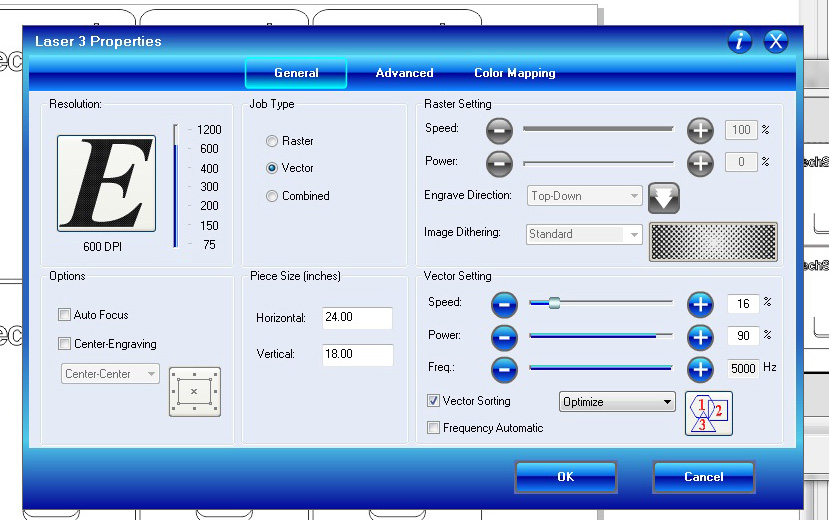
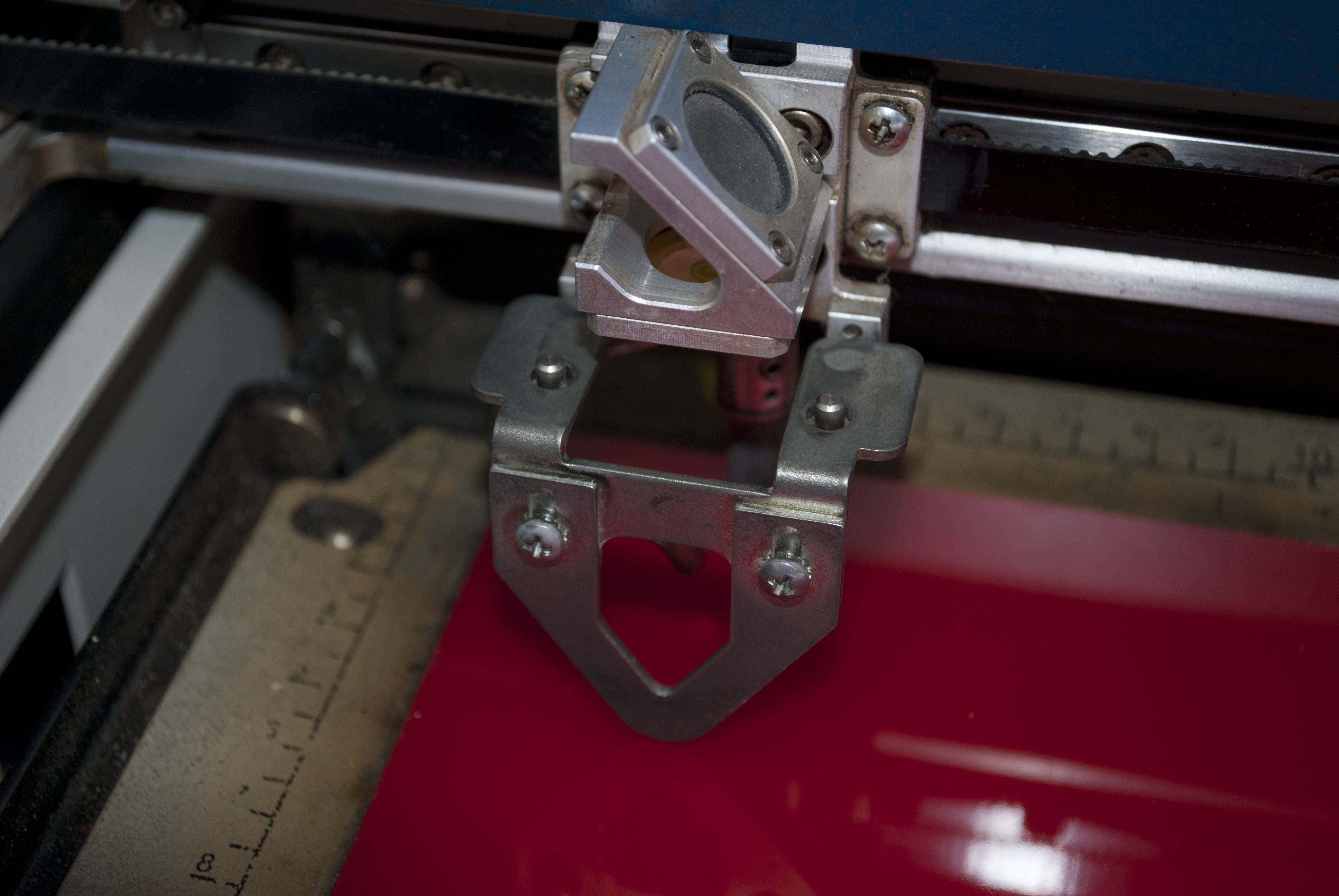
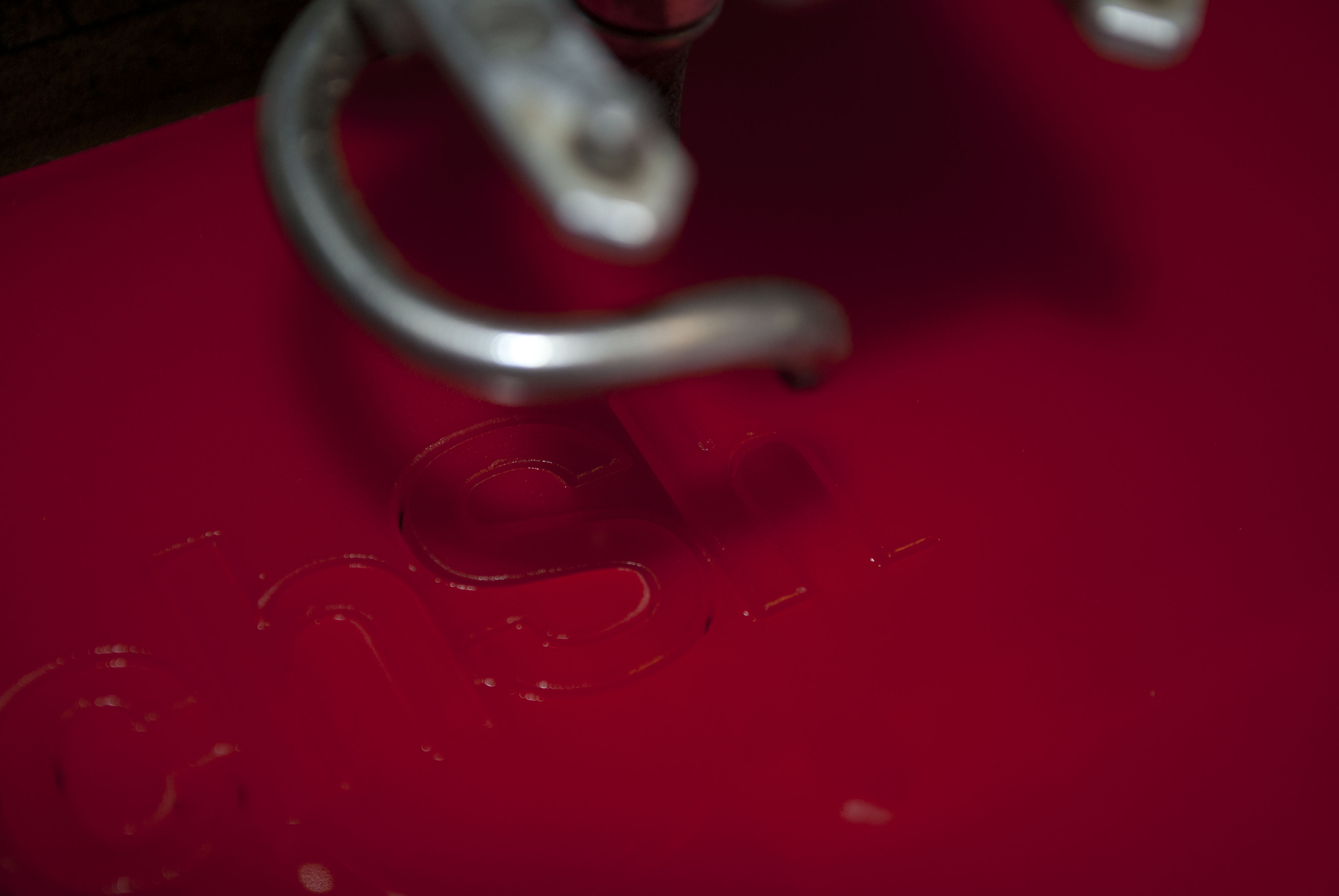
Step 1: Prepare your file for the laser cutter.
I created this file using Corel Draw, but any scale-able vector graphics editor will work--AI, AutoCAD, Inventor, Inkscape, etc. Feel free to use my file as well to make your own.
For this file, I've got 100% hairline vectors--this means that everything will be a cutting operation on the laser engraver. Even the words "TechShop" will be cut out. Any bitmap images or vector lines thicker than hairline line-weight will be etched. For Adobe users this is > .001 pt stroke.
Next, under the print properties I choose the proper settings for 1/8" acrylic on a 60 Watt lasers here in TechShop San Francisco. The speed/power/frequency setting in the blue print properties dialog box should be 16/90/5000 (see below). It is important to note that if you are cutting only one set, it may not be necessary to use the whole 18x24 inch bed. If this is the case, register your work to the top left of the laser bed and make sure that your dimensions in the print properties dialog box match the true dimesions of your work. This should also match in the dimensions of your document properties (Corel Draw), artboard (Adobe Illustrator), or sheet size (Inventor).
Afterwards, make sure the focus is adjusted correctly. The focus guide should barely be touching the top of the acrylic (see below).
Lastly, hit the GO button and enjoy the show.
Attached at this point below are the .crd and .ai files of my work. Please use these as you want.
I created this file using Corel Draw, but any scale-able vector graphics editor will work--AI, AutoCAD, Inventor, Inkscape, etc. Feel free to use my file as well to make your own.
For this file, I've got 100% hairline vectors--this means that everything will be a cutting operation on the laser engraver. Even the words "TechShop" will be cut out. Any bitmap images or vector lines thicker than hairline line-weight will be etched. For Adobe users this is > .001 pt stroke.
Next, under the print properties I choose the proper settings for 1/8" acrylic on a 60 Watt lasers here in TechShop San Francisco. The speed/power/frequency setting in the blue print properties dialog box should be 16/90/5000 (see below). It is important to note that if you are cutting only one set, it may not be necessary to use the whole 18x24 inch bed. If this is the case, register your work to the top left of the laser bed and make sure that your dimensions in the print properties dialog box match the true dimesions of your work. This should also match in the dimensions of your document properties (Corel Draw), artboard (Adobe Illustrator), or sheet size (Inventor).
Afterwards, make sure the focus is adjusted correctly. The focus guide should barely be touching the top of the acrylic (see below).
Lastly, hit the GO button and enjoy the show.
Attached at this point below are the .crd and .ai files of my work. Please use these as you want.
Step 2: Heating and Bending
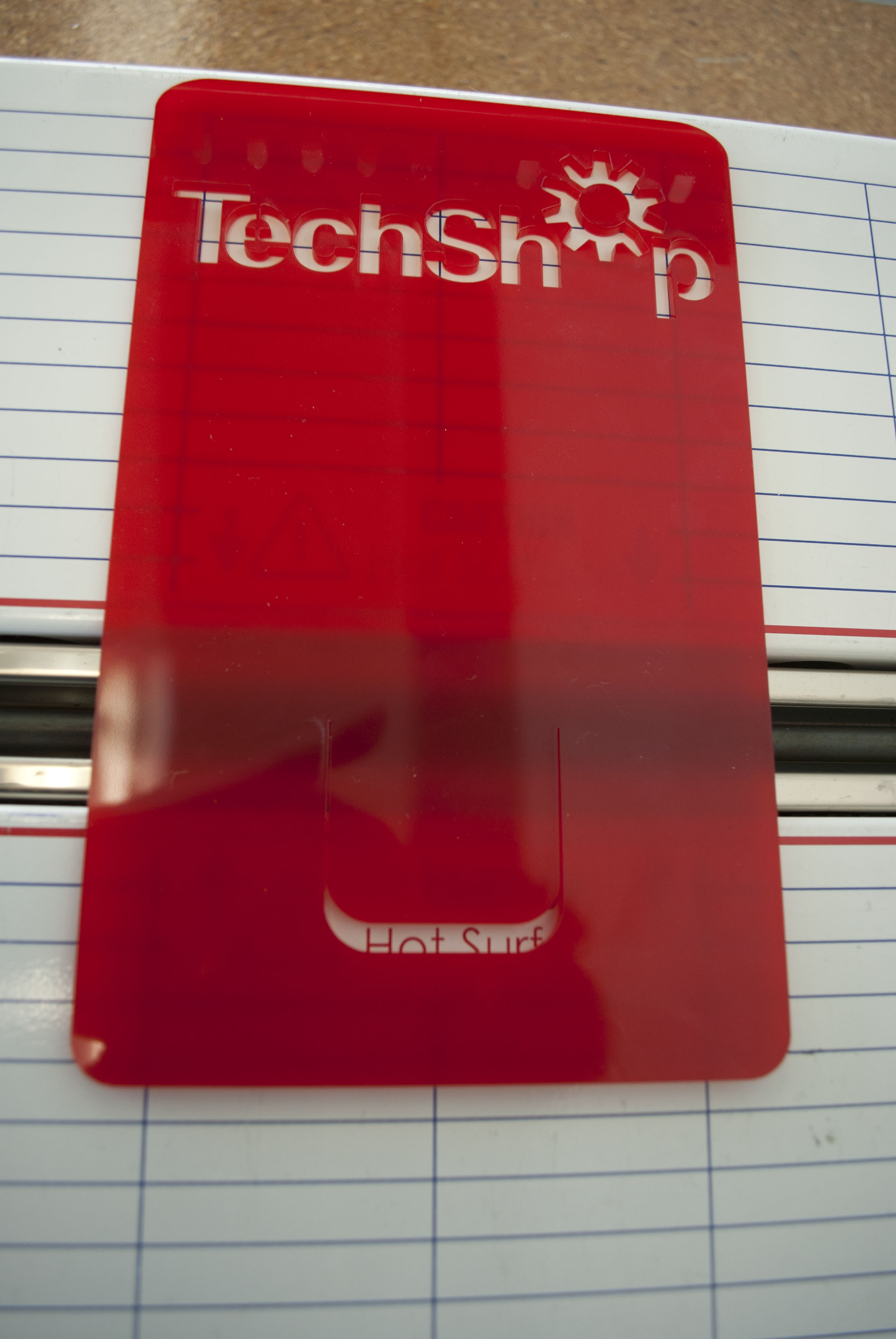
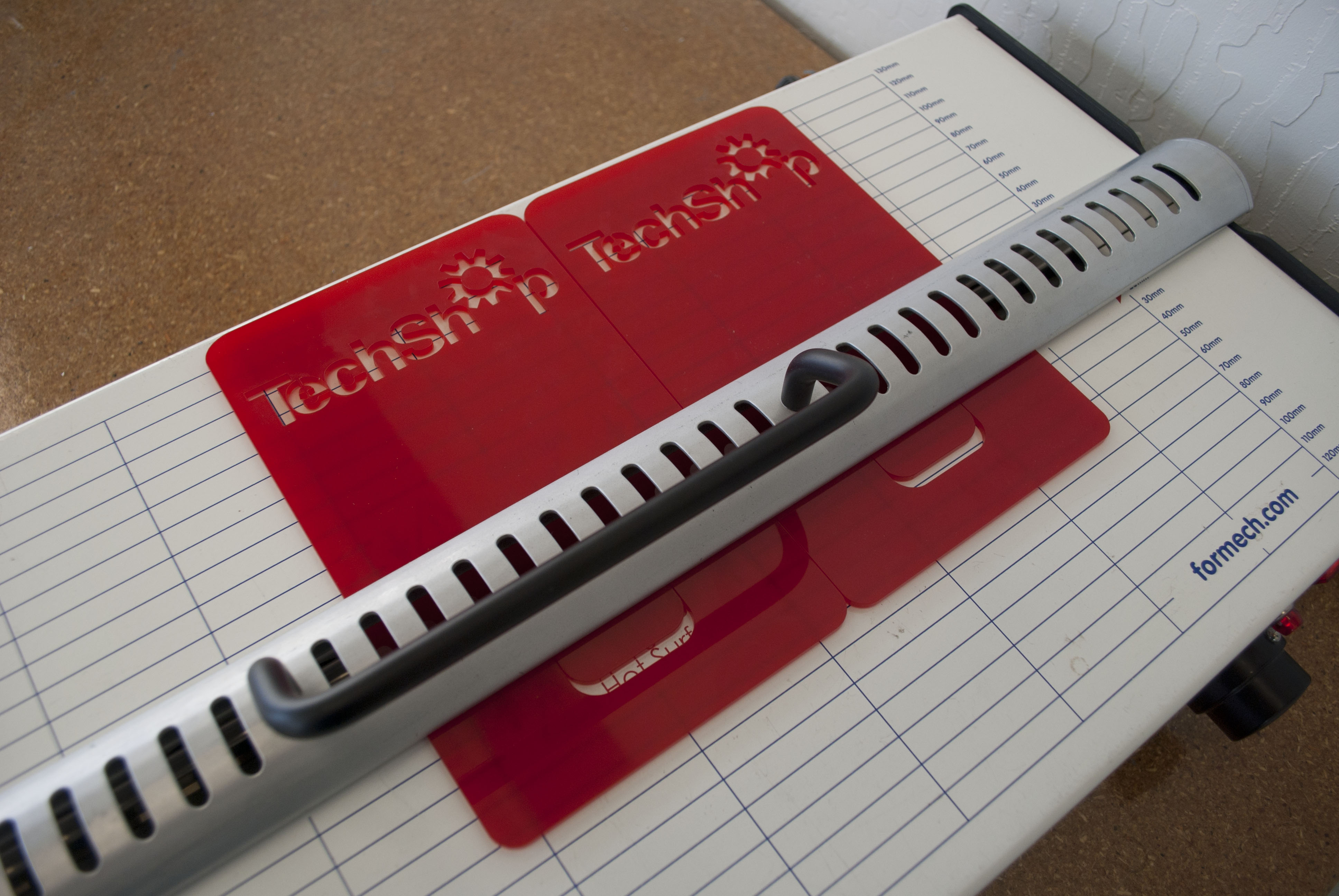
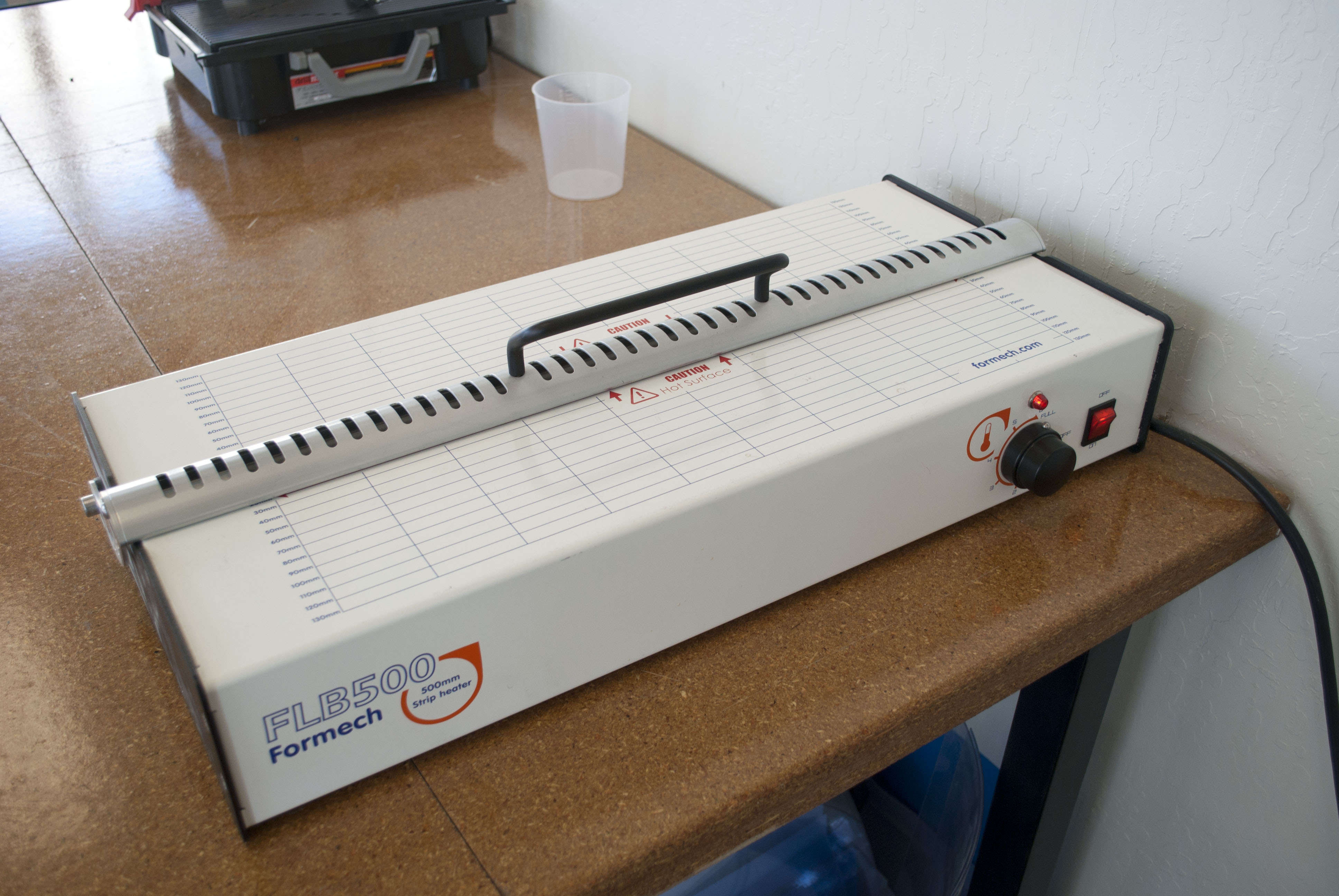
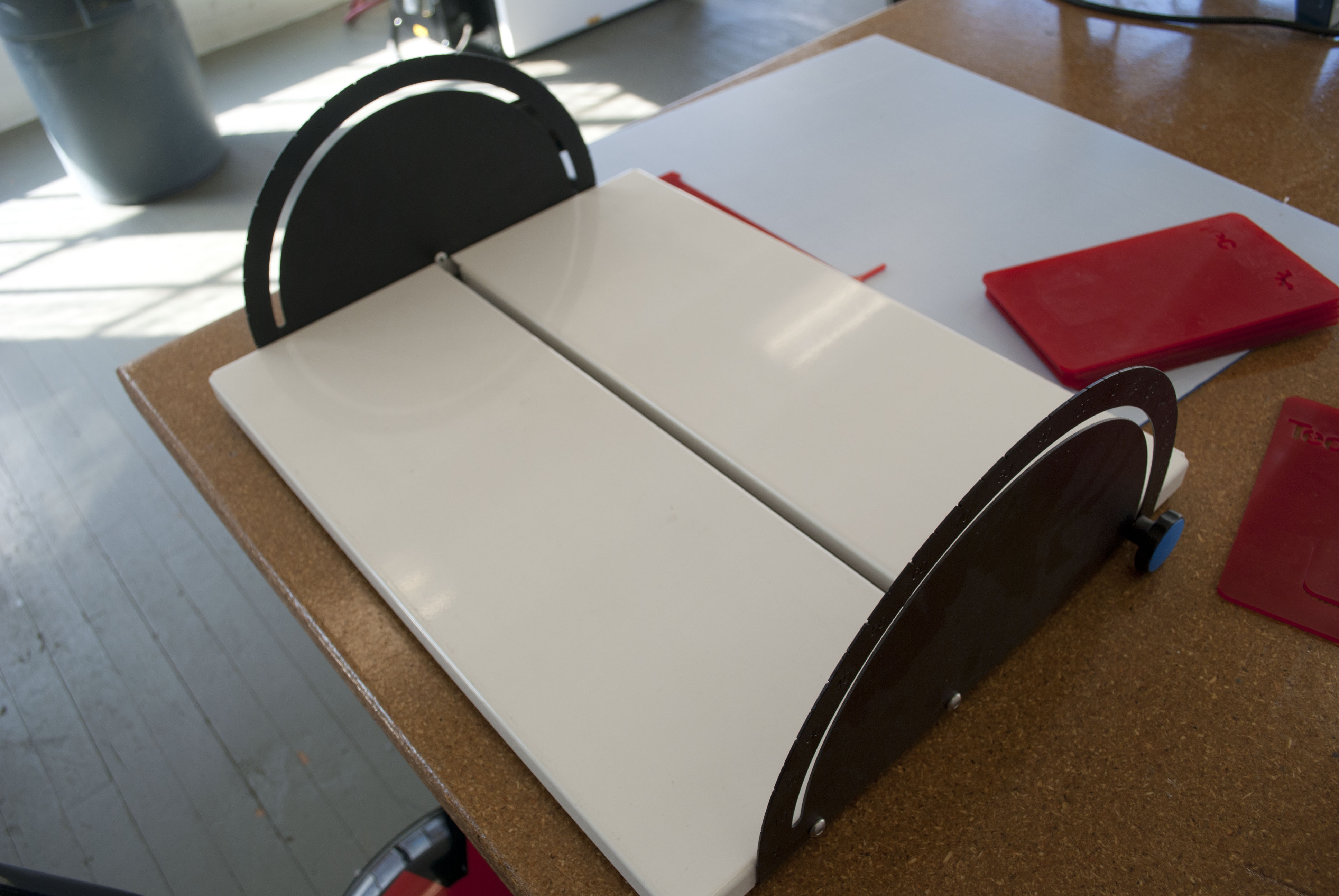
Step 2: Heating and then bending your cut parts.
First take your bookends and place them on the heat strip. It's important that you heat them up evenly, but only in the area you wish to bend. Timing is important here. You may want to practice bending a few scrap pieces before going for the real thing. Once your part has become malleable but before it begins to blister, move it over to the angle guide (optional--and shown below). If you don't have an angle guide available, then use a carpenter's square and the table top. Push the connected arms of the bookends back, to the reverse side of the stand and the single tab forward, facing you. Maintain them perpendicular. Let it sit for about a minute. It takes a while to fully cool, but being patient pays off. Acrylic will want to move as it cools, so keep constant pressure on for a little while.
First take your bookends and place them on the heat strip. It's important that you heat them up evenly, but only in the area you wish to bend. Timing is important here. You may want to practice bending a few scrap pieces before going for the real thing. Once your part has become malleable but before it begins to blister, move it over to the angle guide (optional--and shown below). If you don't have an angle guide available, then use a carpenter's square and the table top. Push the connected arms of the bookends back, to the reverse side of the stand and the single tab forward, facing you. Maintain them perpendicular. Let it sit for about a minute. It takes a while to fully cool, but being patient pays off. Acrylic will want to move as it cools, so keep constant pressure on for a little while.
Fin
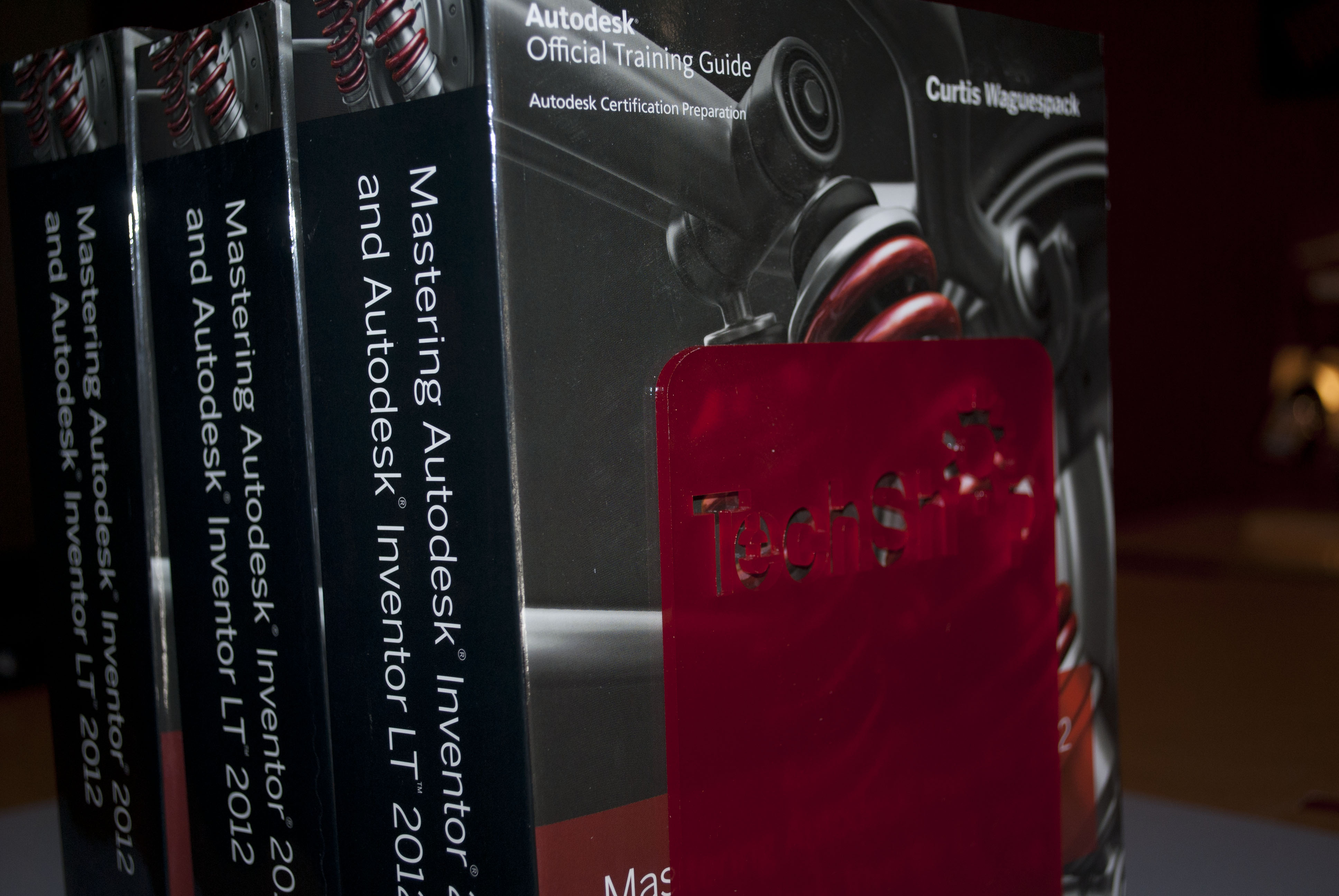

Your bookends are now complete. Wasn't that easy?
Thanks,
~Zack
TechShop
Build Your Dreams HERE
www.techshop.ws
Thanks,
~Zack
TechShop
Build Your Dreams HERE
www.techshop.ws